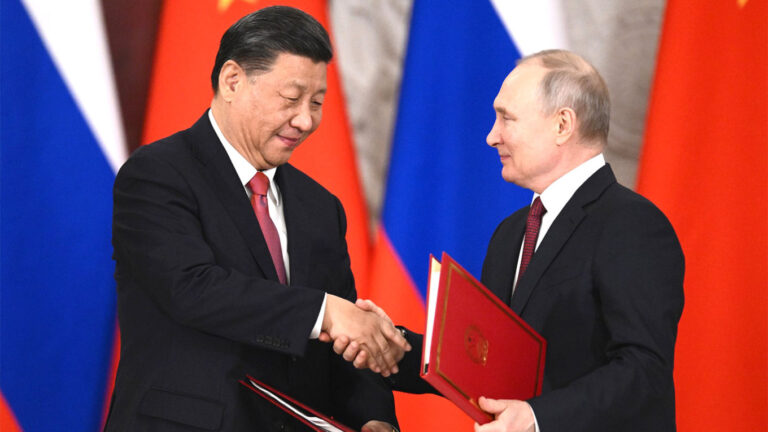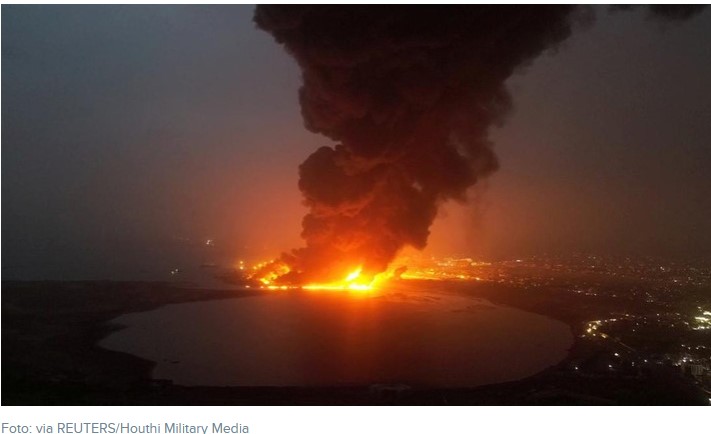
Foto has taken from Wikipedia
The twelfth anniversary of the nationwide rebellion in Syria, spurred by the broader “Arab Spring” uprisings in several countries in the region, has witnessed increased regional efforts to bring the regime of Syrian President Bashar Al-Assad out of isolation despite the grim legacy of brutality under his leadership during the conflict. That uprising set off a devastating internal conflict, decimated much of Syria, and set the stage for intervention by regional and global powers. Most notably, it has been widely regarded that Russia used the Syrian conflict to test out its tactics and the tolerance of the international community for brutal attacks against civilian targets. The Obama administration declined to aid the rebellion, and assistance by Russia and Iran during 2013-2015 enabled President Assad and his Alawite community to defeat the armed opposition and regain control over the bulk of Syrian territory. However, transnational jihadist organizations, including Islamic State (ISIS) and factions linked to Al Qaeda, took advantage of the uprising to establish roots in parts of Syria, leading the United States to deploy nearly 1,000 military personnel in parts of eastern Syria that remain outside the control of Damascus, combatting ISIS there and across the border in Iraq.
Another state with key interest in the region is Turkiye, a NATO ally of the United States and a longtime Assad regime adversary. Having failed to oust Assad, Ankara turned its attention toward the Syrian Kurds of northeastern Syria, who remain outside Damascus’ control and are aligned with Washington’s anti-ISIS combat operations. Ankara views some Syrian Kurdish factions – including those incorporated into the U.S.-backed Syrian units – as terrorist organizations that support acts of violence for Kurdish autonomy within Turkiye. Turkiye also supports anti-Assad Arab oppositionists who have become confined by Russian-backed combat in the northern province of Idlib. Meanwhile, after taking a relatively neutral position on Assad’s ouster at the start of the rebellion, Israel – which views Tehran as its most significant regional threat – has been conducting frequent air strikes in Syria against Iranian and Iran-backed military and military infrastructure positions there.
Assad’s global isolation, coupled with the many competing agendas pursued by outside stakeholders, significantly complicated U.N.-backed efforts to provide relief to the hundreds of thousands of Syrian victims of the February 6, 2023 earthquake. The recognition by the international community that the Syrian people were largely alone in facing the drastic consequences of the earthquake has accelerated longstanding efforts by the region to accommodate the Assad regime. In the aftermath of the earthquake, foreign ministers from Jordan and Egypt made their first visits to Damascus since the 2011 uprising. Many Arab states contributed humanitarian aid to the Syrian people, including Saudi Arabia who coordinated with the Syrian Red Crescent to deliver aid to regime-held territory for distribution by the Assad government. The Sultanate of Oman hosted a visit by Assad two weeks after the quake. Even before the earthquake, many regional stakeholders had already concluded that continuing to shun the Assad regime was neither helping his opponents nor causing Assad to lessen his dependence on Tehran. The United Arab Emirates (UAE) has long argued for re-engagingAssad as a means of reducing Iranian influence in Syria and this week hosted President Assad and his wife, Asma, in Abu Dhabi. This visit was notably marked by more ceremony than his previous visit; President Assad’s plane was greeted by Emirati fighter jets and he was met by UAE President Sheikh Mohammed bin Zayed al-Nahyan, receiving a canon salute as he entered the royal palace.
At the Munich Security Conference in February, Saudi Foreign Minister Prince Faisal bin Farhan Al Saud argued that consensus was building in the Arab world that isolating Syria was not working and dialogue with Damascus was needed, especially to address Syria’s dire humanitarian situation. Syria’s membership in the Arab League was suspended in 2011 after Assad used the Syrian military against the popular uprising, but the Kingdom and other Arab governments have begun to discuss the conditions under which the Syrian government’s membership in the League might be restored. Some regional experts link Syrian reintegration to Assad’s loosening his ties to Tehran and Iran-backed Lebanese Hezbollah, as well as setting the conditions for the return of Syrians who fled the civil conflict. Despite Iran’s reconciliation with Saudi Arabia in a China-brokered agreement on March 10, Tehran and its regional allies such as Hezbollah, the Houthis in Yemen, Iraqi Shia militias, and other factions, remain adversaries of the several Arab states.
Russia’s faltering invasion of Ukraine has left Moscow’s continuing involvement in Syria uncertain, as it has had to redeploy regular and Wagner mercenary forces from Syria to Ukraine. The redeployments have prompted nervousness in Damascus that Moscow might abandon its commitment to the Syrian regime’s survival. To try to obtain reassurance, Assad visited Moscow on March 15, marking the twelfth anniversary of the uprising. During the visit, he reiterated Damascus’ support for the Russian invasion of Ukraine and told Russian media that he would welcome Russia’s establishment of new military bases and increases of its troop numbers in Syria, suggesting a permanent Russian military presence there. Alongside the Hmeimim air base, from which Russia launches air strikes in support of Assad, Moscow still uses the Tartus naval facility in Syria. Russia and Syria also have restored the al-Jarrah military air base in Syria’s north for joint use; the base east of Aleppo was recaptured from ISIS fighters in 2017. However, any addition of Russian forces or equipment in Syria is difficult to envision as long as Russian forces remain bogged down in Ukraine. In meeting with Assad, Russian President Vladimir Putin made no commitments to add Russian troops or combat aircraft in Syria. Instead, he focused his public comments on his efforts to promote reconciliation between Assad and Turkiye’s president Recep Tayyip Erdogan.
Like Arab leaders, Erdogan appears to have bowed to the recognition that Assad will not be displaced from power in the foreseeable future. Russian diplomacy began to bear fruit in December when the defense ministers of Syria and Turkiye met in Moscow for their first talks since the Syrian war began. Diplomats expect the Syrian and Turkish foreign ministers to meet in the coming weeks. However, dashing expectations for an early Syria-Turkiye summit, Assad reiterated while in Moscow that he would not meet with Erdogan until Turkiye ends its “occupation” of northern Syria. At the same time, Moscow has reportedly sought to retaliate for Israel’s increasing alignment with Ukraine – including supplies of drone technology to Kyiv – by requesting a March 17 U.N. Security Council discussion of the strikes that Israel periodically conducts against Iranian and Iran-backed targets in Syria. Israel and Russia have long coordinated their activities in Syrian airspace to avoid any clashes. Russia will hold the presidency of the U.N. Security Council in April (based on the regularly rotating schedule, according to alphabetical order, among Council members), a perch from which Moscow could choose to put additional pressure on Israel for its interventions in Syria that target Iranian assets.





